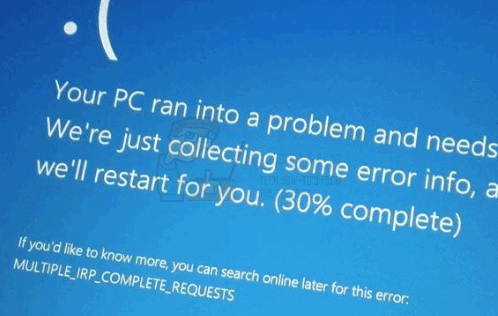How to Fix MULTIPLE_IRP_COMPLETE_REQUESTS BSOD on Windows 10
Multiple IRP complete requests is a Blue Screen of Death error message, which tells you that a driver has called a IoCompleteRequest to ask that an IRP is completed, but the packet has already been completed, resulting in this error message. This most commonly happens when two separate drivers believe they both own the packet, and they both try to complete it. The first request is successful, and the second one fails and results in this bug check. This is difficult to track down, especially due to the fact that the second driver covers the trail of the first one.
This issue usually appears for users of LogMeIn Hamachi, which is a software a lot of people use to create a virtual LAN. The problem is with LogMeIn Hamachi’s virtual miniport driver (hamdrv.sys) and it’s a known bug with the software.

There are two things that you can do to solve this, and they will both prevent you from getting any BSOD error messages.
Method 1: Update LogMeIn Hamachi
Since the developers behind the software are fully aware of the error, they have since released an update (02.05.2014) that fixes this issue. What you should do is download the latest version of LogMeIn Hamachi from their website and install it. But before you do that, follow the steps below to uninstall the previous one.
- Press the Windows key on your keyboard and type in Change or Remove a Program for Windows 8/10, or Add or Remove Programs if you’re using an older version, and open the result.
- From the list of software, find LogMeIn Hamachi and click it.
- Click Uninstall and follow the wizard to remove the software.
- Reboot your device.
- Head to your Downloads folder, and install the freshly downloaded, latest version of Hamachi.
Method 2: Completely remove LogMeIn Hamachi
If the previous method didn’t work, it might mean that there is also something else that’s causing issues. In this case, you will need to find an alternative to LogMeIn Hamachi, as this software will simply not work on your computer. Follow steps 1 through 4 from the previous step to see how you can remove it in order to stop getting these error messages.
Method 3: Update your BIOS
If all else fails, you might want to check if there’s a BIOS update available. If critical errors such as this one appear due to the BIOS’ fault, manufacturers usually release an update for the BIOS. Checking if one is available, and installing it, is fairly easy.
- Identify your current BIOS version by pressing the Windows key, typing in msinfo32 and opening the result, then clicking System Summary. Your BIOS version should be on the right, below your processor.
- Now that you have the BIOS version, check the manufacturer of your PC or motherboard for an update. You can either head to their website and search manually, or do an internet engine search – the first result should be the one of the manufacturer’s website. Make sure that you download the BIOS for your specific model, as doing a BIOS update for the wrong model won’t work. You also might want to grab any additional documentation, as it often includes any warnings and specific instructions.
- Head to your Downloads folder, and check the documentation first. If there’s any warning, you will find it there, along with a detailed list of fixes and functions. For example, there might be a certain patch required to make the update work, and you might brick your PC without knowing why if you don’t check this.
- Double-click the .exe file you downloaded. Make sure there are no open programs running, and let your PC handle the update. Be aware that in case your PC shuts down in the middle of an update, you won’t be able to boot it back up, so make sure that you have an uninterruptible power source, such as being plugged in if you’re doing this with a laptop. Some older PCs might require that you create a bootable drive, such as a CD or USB, and install it that way, in which case you should follow the steps from the second method from this guide, beginning from Download Rufus.